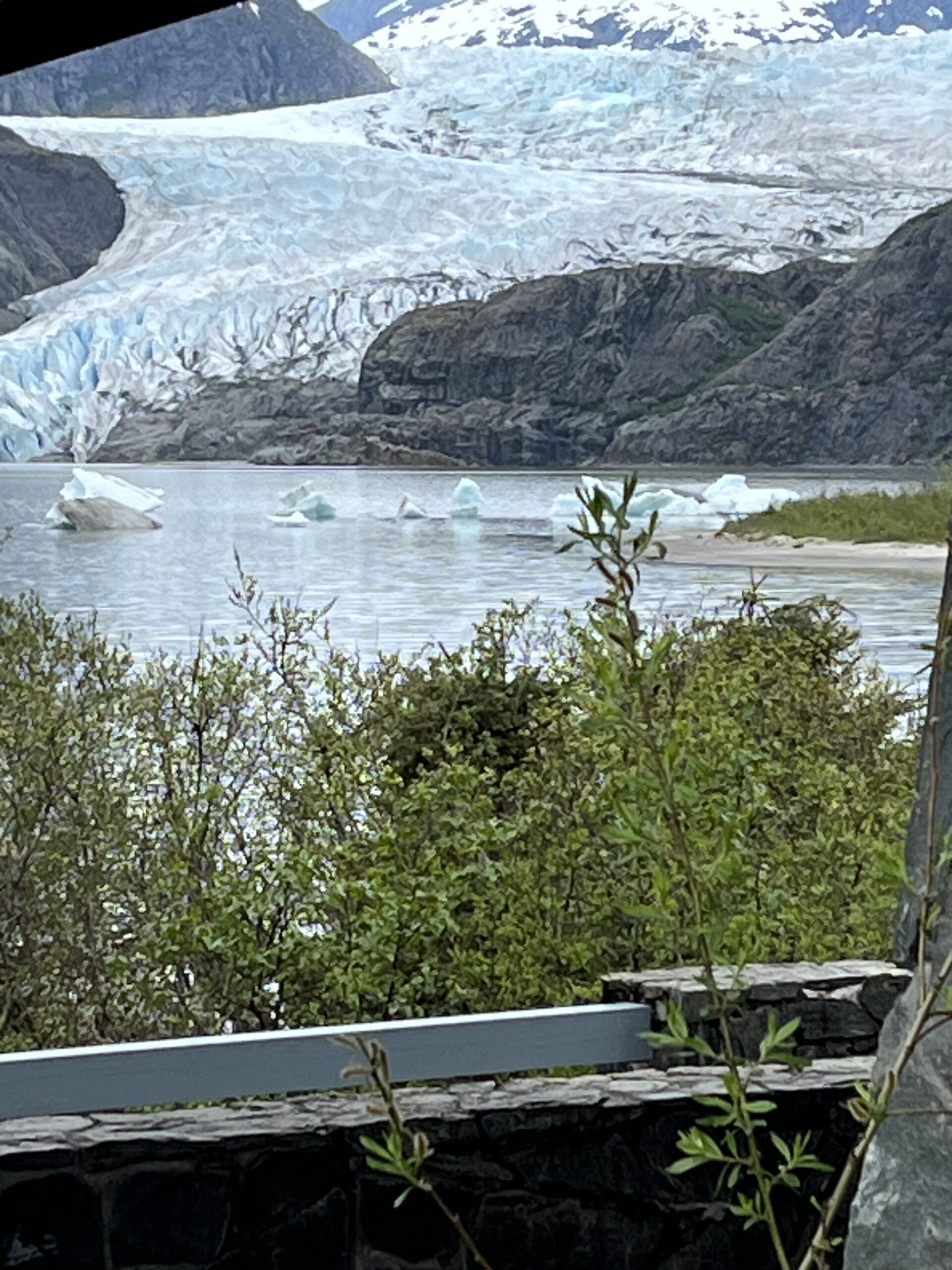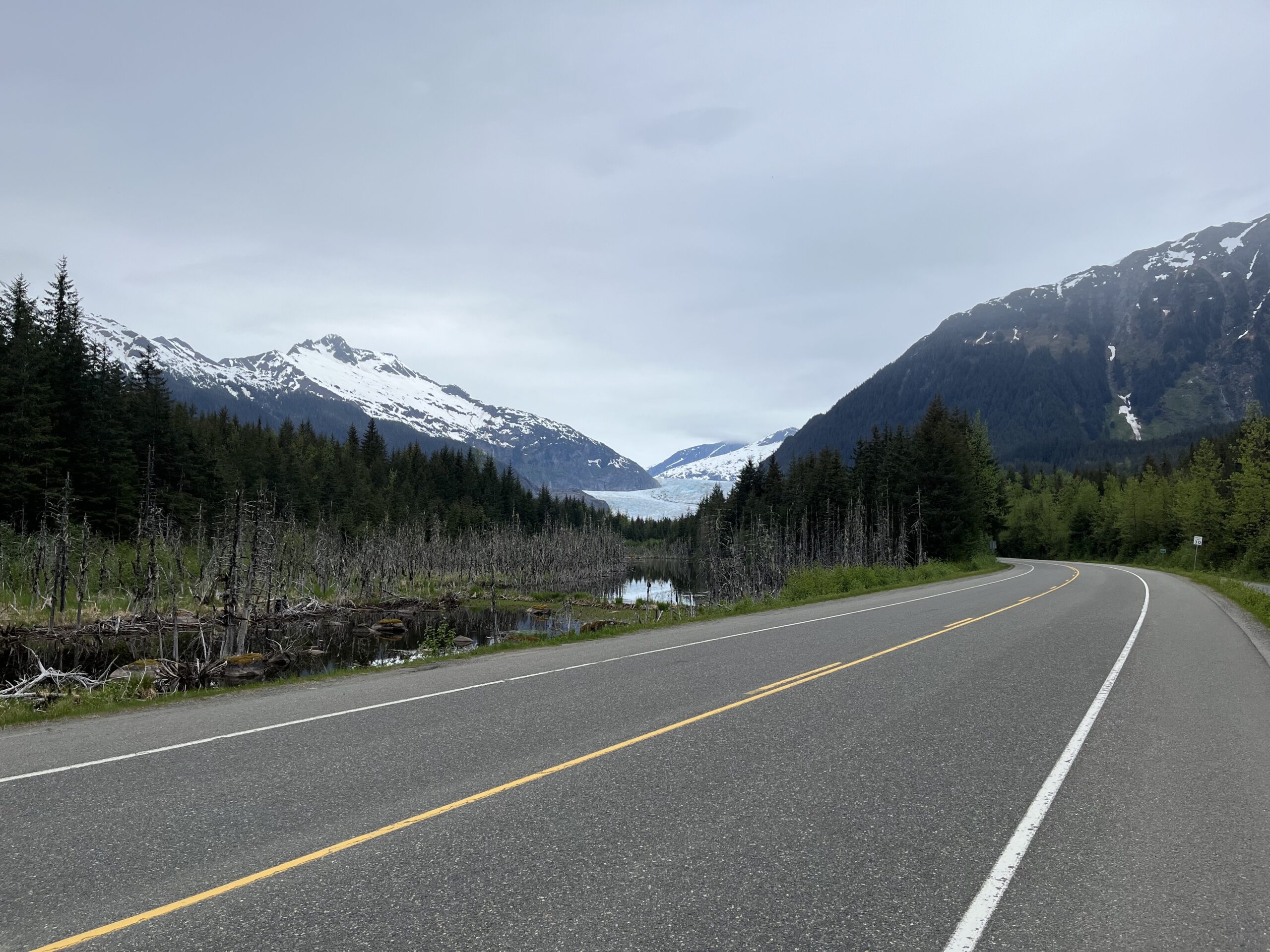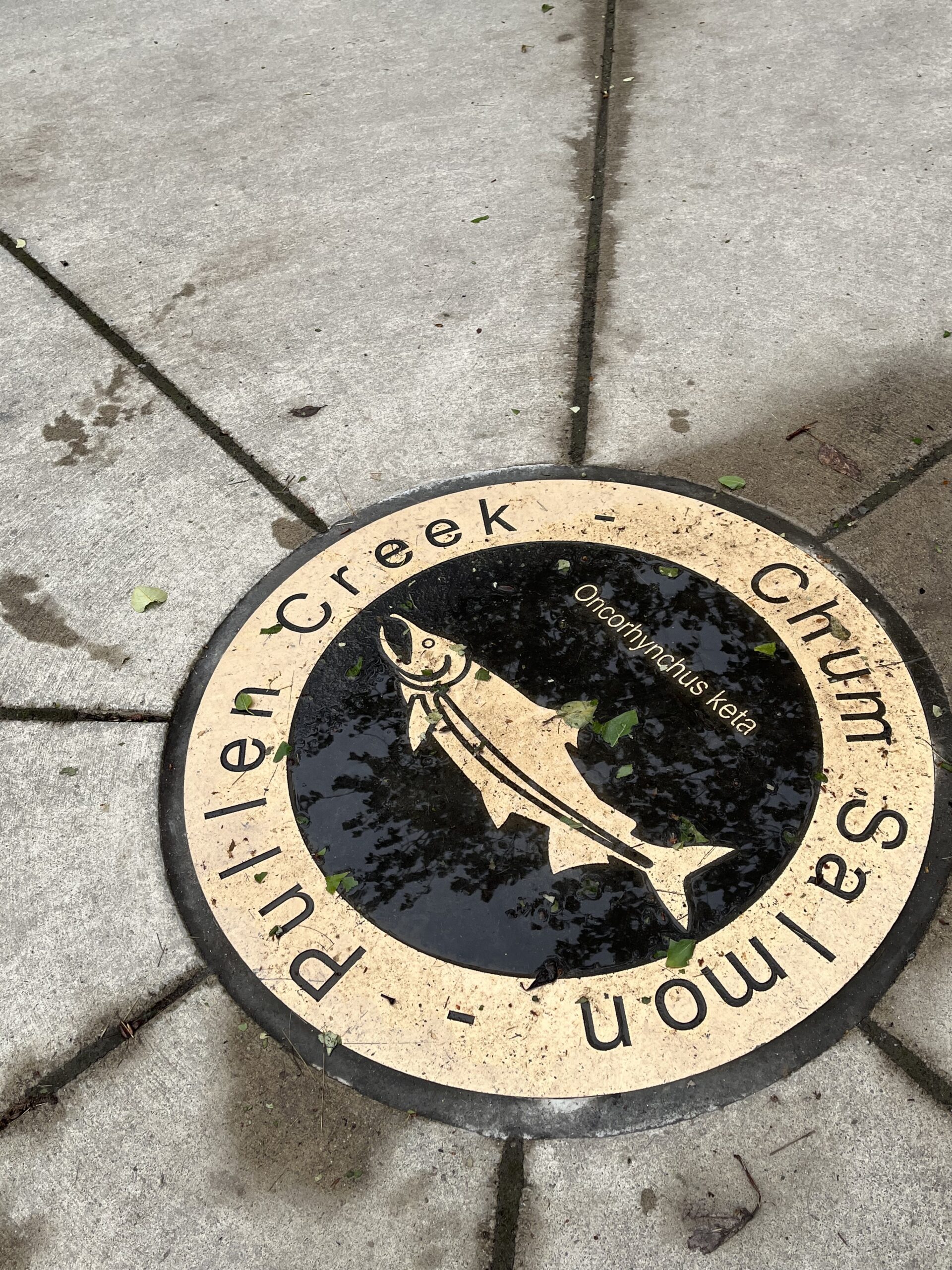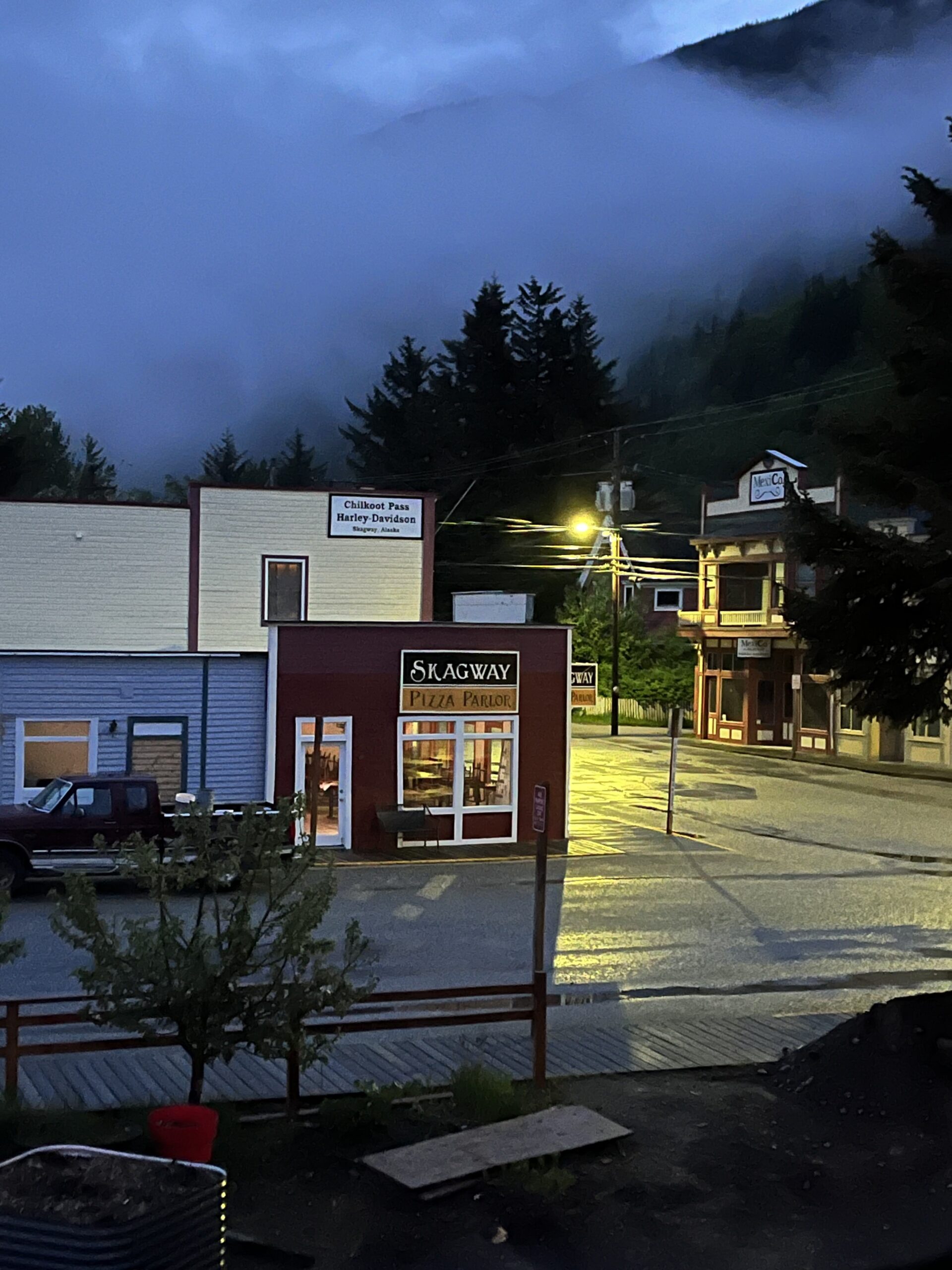
Sometimes, an unexpected series of events – a “happy accident” – can open a space within us that we didn’t even know existed. In this case, I had mixed up dates for a work trip and needed a substitute. I found one within the required time limits; however, the best part of this trip was getting there – and getting home again.
I like to think that the gods were playing a joke on me, as the best way to re-assess one’s life is to have a forced slow down. What better way than a layover and overlapping connections in beautiful Juneau, Alaska. After staying all night at the airport, which I did not take into account when making flight plans, my morning wake up call was this lovely vision outside the airport:
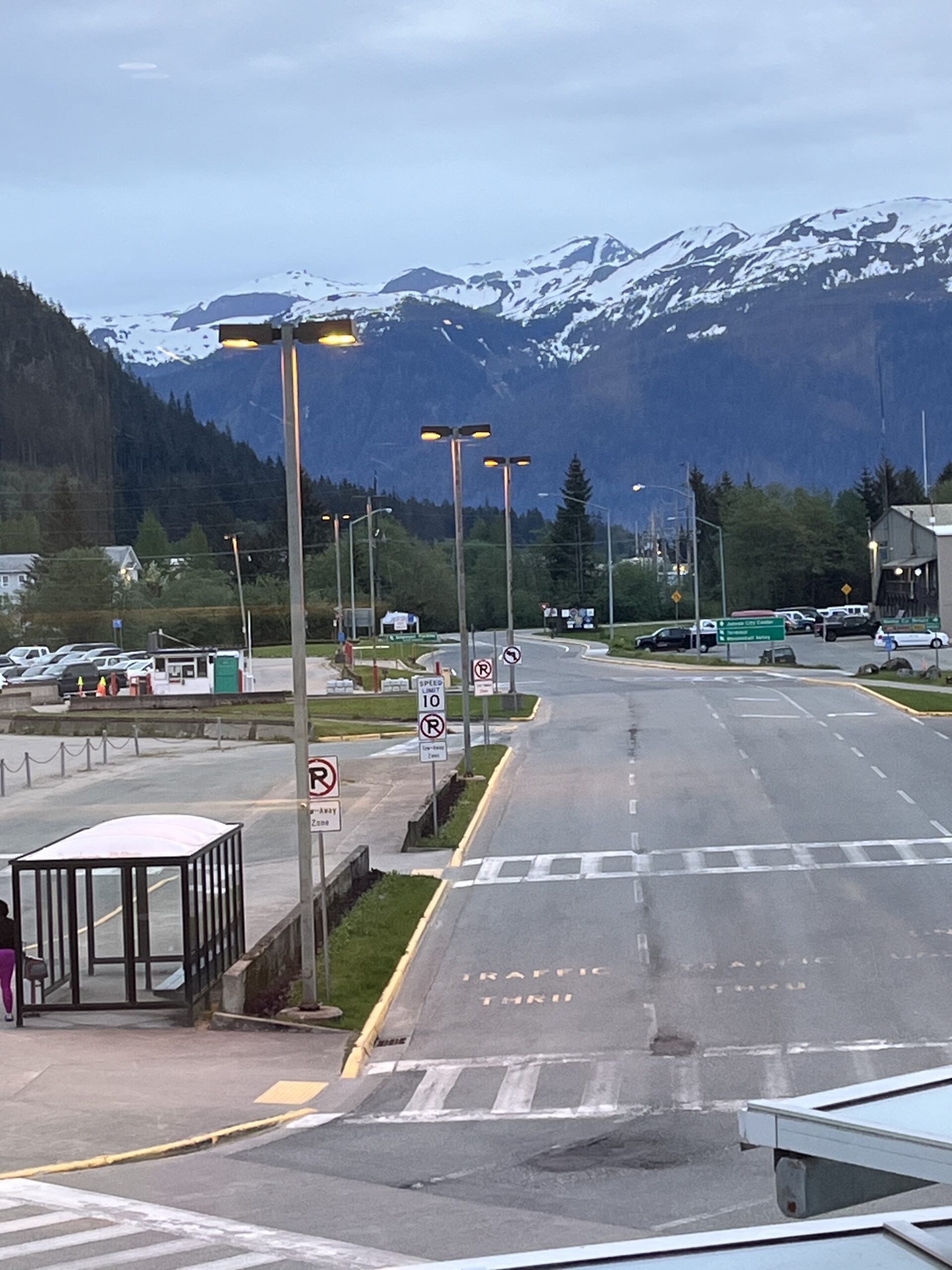
Clio Ajana
4:30 a.m Wake-Up Call – Juneau, Alaska [C. Ajana]
Feeling muscles in my legs that didn’t know how to untie themselves after a 12 hour trip from Minnesota to Alaska, but needing to feel the ground during the next ten hours before I continued my journey to Skagway, I found my way to nearby Mendenhall Glacier by taxi.
Rounding the corner and seeing a vast glacier reminded me of how tiny we are as humans in comparison to the earth and its beauty. While the Mendenhall Glacier is one of many from the Juneau ice fields, its accessibility by foot, taxi, and city bus makes it unique.
Sadly, it is shrinking at a fast rate. If there are any doubts about climate change, seeing up close and in person how the glacier appears in the 21st century versus the mid-20th century brings sadness to the heart and soul.
As I stood to look at the beauty created by the slow accumulation of ice and snow over 80 years, the time it takes for ice to move from the top of the ice fields to the portion easily seen from Mendenhall Visitor’s Center, my shoulders ached and my heart grew heavy. The center does its best to animate a past that no longer exists due to erosion through videos, time-lapsed photography of the appearance of the glacier from 1958-2015, and a fresh-faced forest ranger from Apple Valley, Minnesota who informs each new group in a mildly disturbing tone that a new center will be built soon, as what we see now will have disappeared by 2040.
Soul clearing happens in small drips and drabs, rather than a large sign blasted into one’s face by the gods – but seeing the vast spaces of water and glacier with a brisk wind and temperatures in the low 40s does come really close! It reminded me that the price we pay for being on the planet with our fellow inhabitants is to strive to keep thinking about what we can build, not just what we can destroy.
I asked a local writer from Juneau how she stands the tourism. “Do I want tourism or do I want the mine above town to re-open?” she replies. Her face contorts into a frown that tells me there really is no other option. Tourism is a temporary stop gap to protect the areas that are slowly being removed from the possibilities of our future generations.
Peering across the water, the blue ice reminds me that nothing remains the same, as the glacier is quickly disappearing. A question pops into my head during the entire visit: will I be able to see this again, or will the pictures from my phone have to suffice?
A box of the unknown scatters across my brain about my role in the environmental changes in the planet. While stopping climate change has become marketable as a good cause, the increasingly potential reality that much of what we humans have seen as modern marvels may soon be beyond reach chills me.
Work may have brought me to Alaska, but what I see reminds me that as a human, I have a higher responsibility to the planet, to Mother Gaia, and to my fellow inhabitants – human and non-human.
Springtime in Southeastern Alaska, with its mild and rainy climate, requires layers and minimal sunscreen; in addition, it provides natural beauty that can heal. What I love is how the contrast between crystal blue ice and serene greenery in the Tongass National Forest mimics the needs of the human body and soul: we need the fluid nourishment to replenish our body and the protective form of the forest to remind us to stay grounded and feed who we are as humans at our core.
With the darkness coming so late, having time to think about what matters in life and in the world expands. You know in your soul what is right for you.
It was hard to sleep. My usual bedtime looked like an eerie early evening echo of dawn.
Excitement permeates each dawn, bringing a fresh catch of new ideas and solutions to problems. Sleep – this requires sleep – which does happen – eventually. The benefit of time spent in one place, even a few days, is the biological need to shut down and nurture the physical body, which in turn brings forth solace for the spiritual body.
Like mosquitos awaiting a feast, Skagway’s few streets fill with tourists who swamp the town and the local internet from eight in the morning until seven at night. It’s so cold however, that even the mosquitos don’t want to show up.
Eventually, I find myself needing to return to my everyday life, where I don’t have to worry about freezing from the damp air and the near constant wind. The temperatures back home are in the mid to upper 80s. I will arrive in layers that are perfect for 42 degrees, and not so good for 75 degrees at midnight. Like most good journeys, however, getting home is just as delicious as getting to the destination.
For many, travel to Southeastern Alaska is by cruise ship; however, I found the Alaska Marine Highway System demonstrates a lovely opportunity to clear the soul. Dismiss thoughts of ferries that reek of diesel fuel and little else. The Columbia offered a full dining room experience at a “lower 49” reasonable price, or a snack bar if someone just wanted sandwiches. The minimal frills cabin yielded a toilet, shower, sink, towels, soap and a comfortable bunk bed set up. I don’t know when or if I will ever visit Alaska again, even for work, but if I do, I’m going via the ferry. If I had a week, I could pop on at Bellingham, WA and ride up before flying home. There is something amazing about letting the engines lull your tired muscles and weary soul to sleep.
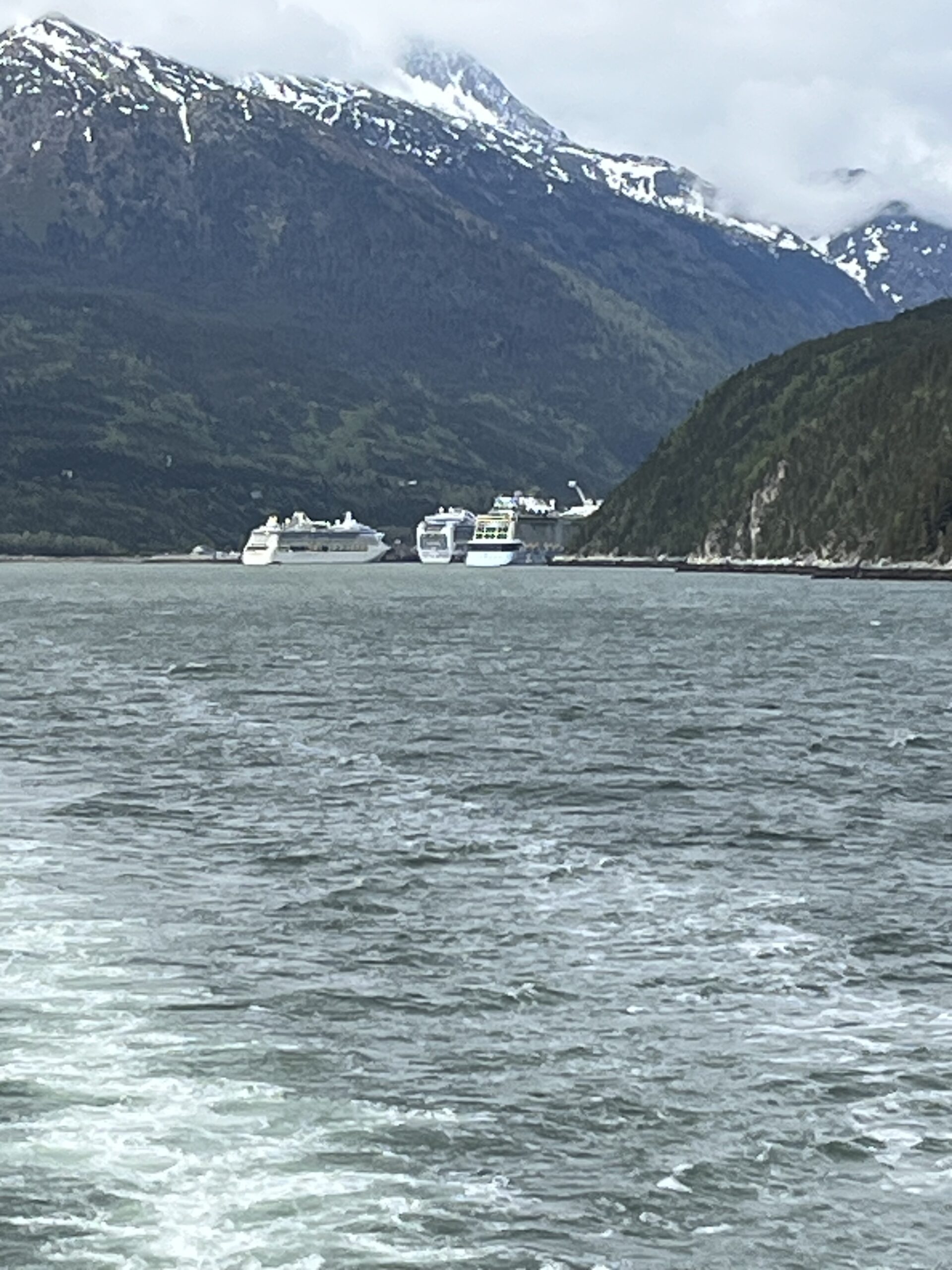
Clio
Looking Back at Skagway [C. Ajana]
As we pulled out, I looked back at Skagway from the waters trailing behind the ferry. I embraced the heavy cloak of normalcy which settled over my soul.
Upon returning to Juneau, I reveled in viewing a tree in the middle of the Alaska State Museum, as a representation of strength and rejuvenation amidst a harsh climate. Life can sometimes feel that way. These are the times when we need to listen to our sounds as well as our bodies and just embrace a stillness. Museums promote such an atmosphere with exhibits where you can view or photograph, but not touch. You can slowly walk in the quiet with other bodies intent upon their own musings, and find parts of the self that might have been lost in the frenetic pace of the everyday.
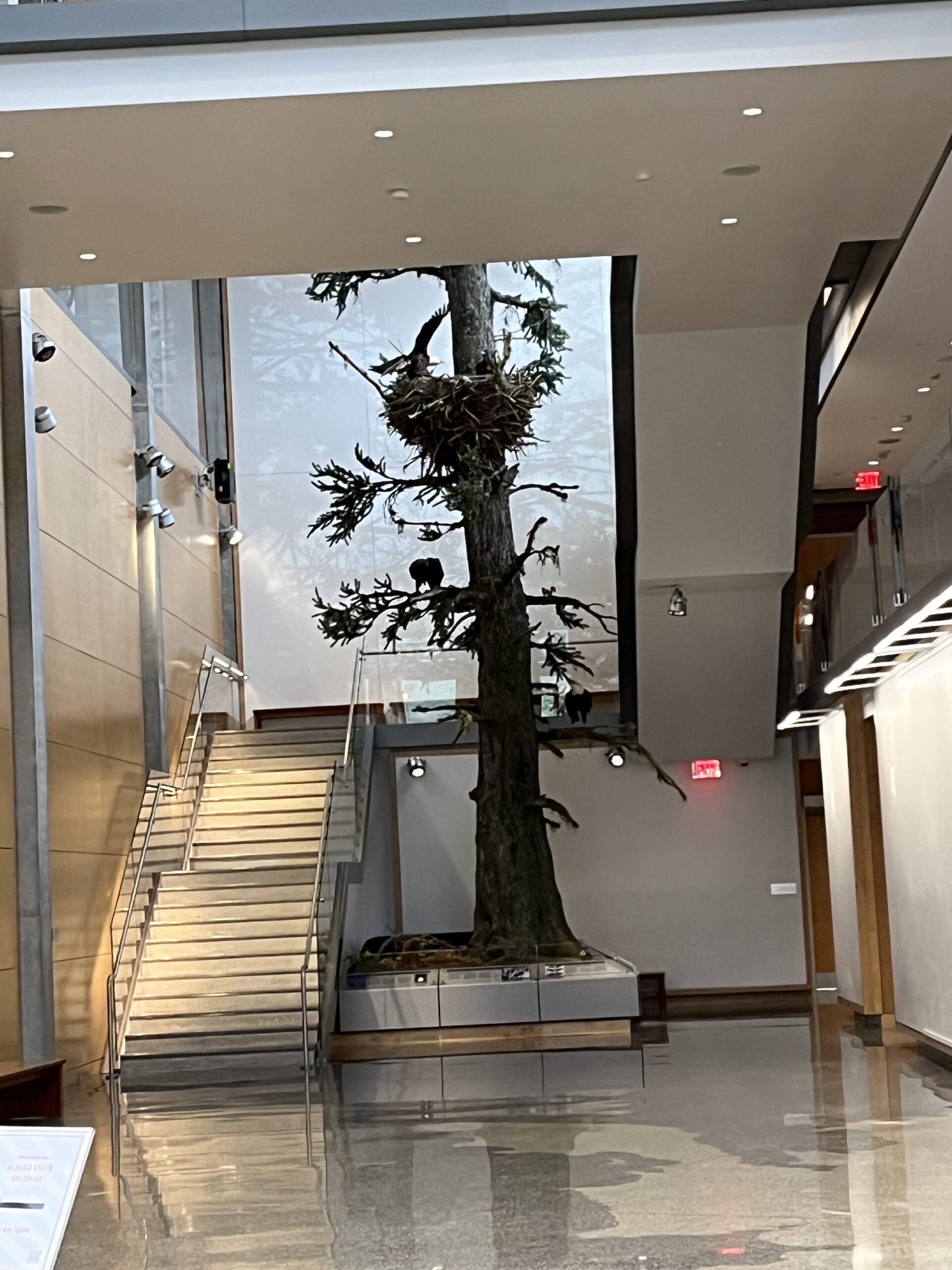
Clio Ajana
Tree in the Alaska State Museum Entryway [C. Ajana]
While I never expected to find myself, for the umpteenth time in a place where flannel at night is quite normal and rain boots are obligatory for the muddy places, I am glad the gods put me there. Sometimes it takes a happy accident to clear the soul, which allows it to come back to you. If nothing else, seeing this small part of Alaska reminded me of how much attention our climate needs all over.
The Wild Hunt is not responsible for links to external content.
To join a conversation on this post:
Visit our The Wild Hunt subreddit! Point your favorite browser to https://www.reddit.com/r/The_Wild_Hunt_News/, then click “JOIN”. Make sure to click the bell, too, to be notified of new articles posted to our subreddit.

